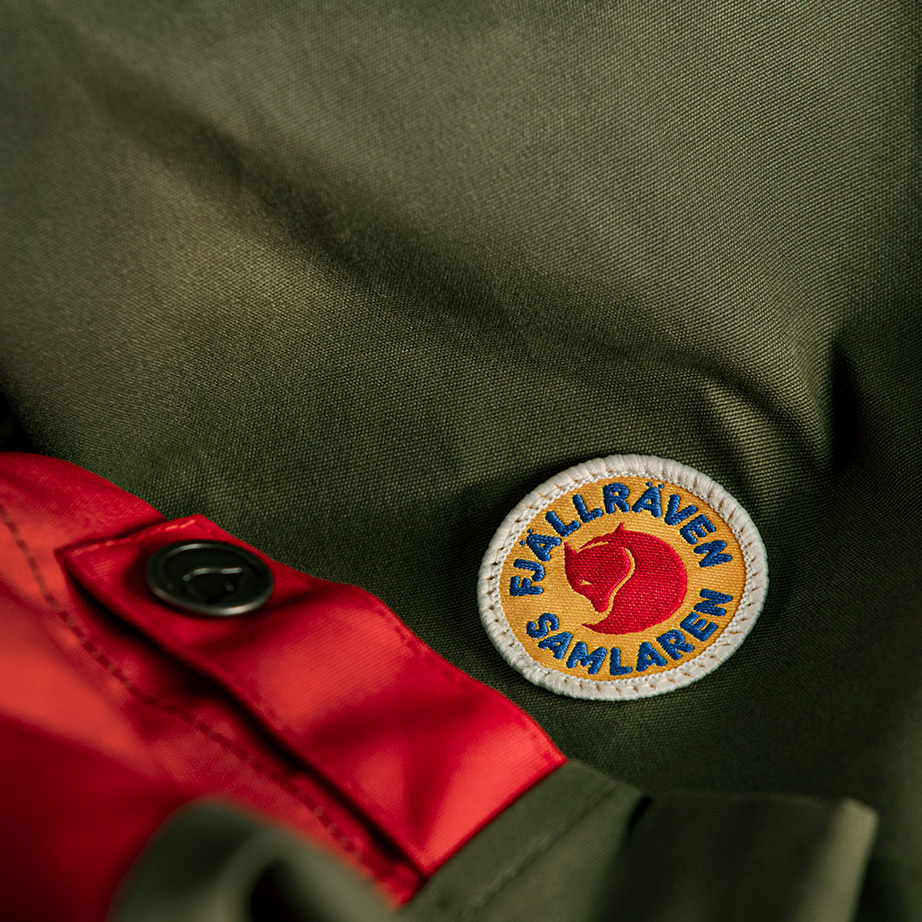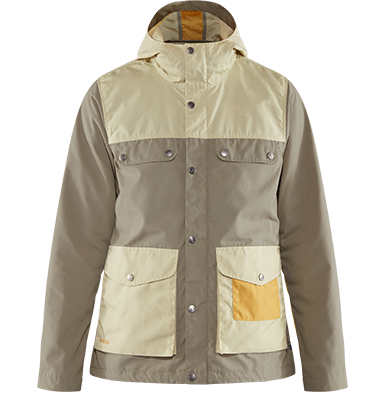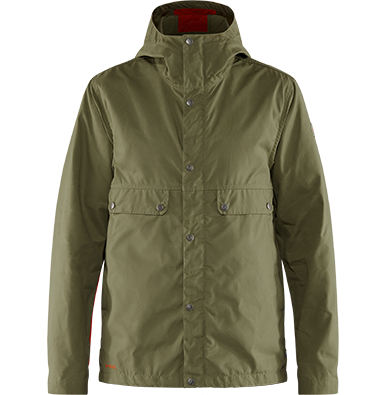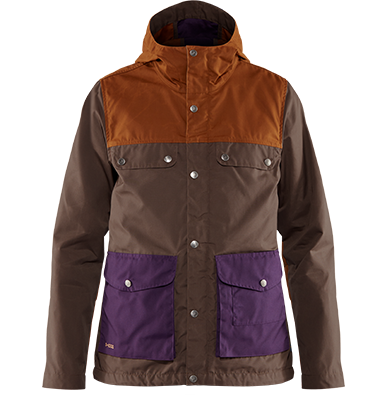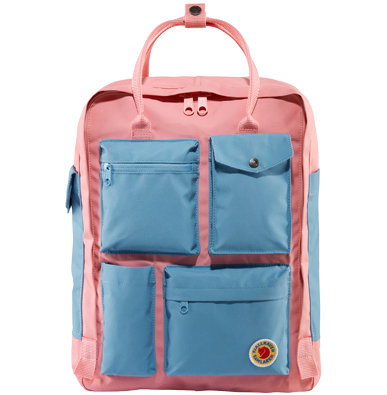New adventures for leftover fabrics
In our new limited collection Samlaren, leftover fabric is given a new purpose through playful solutions and colour combinations and an all-important but seldom-asked question is raised: What happens to leftover fabric? We talked to Sara Isaksson, designer at Fjällräven.
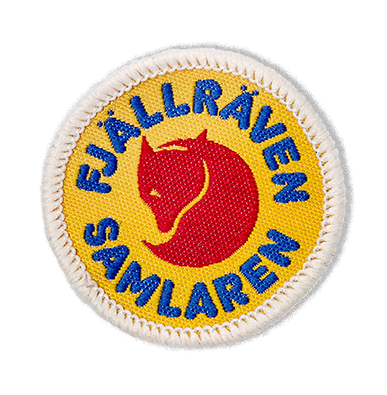
At Fjällräven, the issue of sustainability is always high on the agenda. In the production of our equipment this manifests itself through how we choose materials, coatings and manufacturing methods and how we can create functional designs that make our products work well for years – so many years that they are often handed down from one generation to the next. But behind the scenes, there are other factors that make this simple issue significantly more complex.
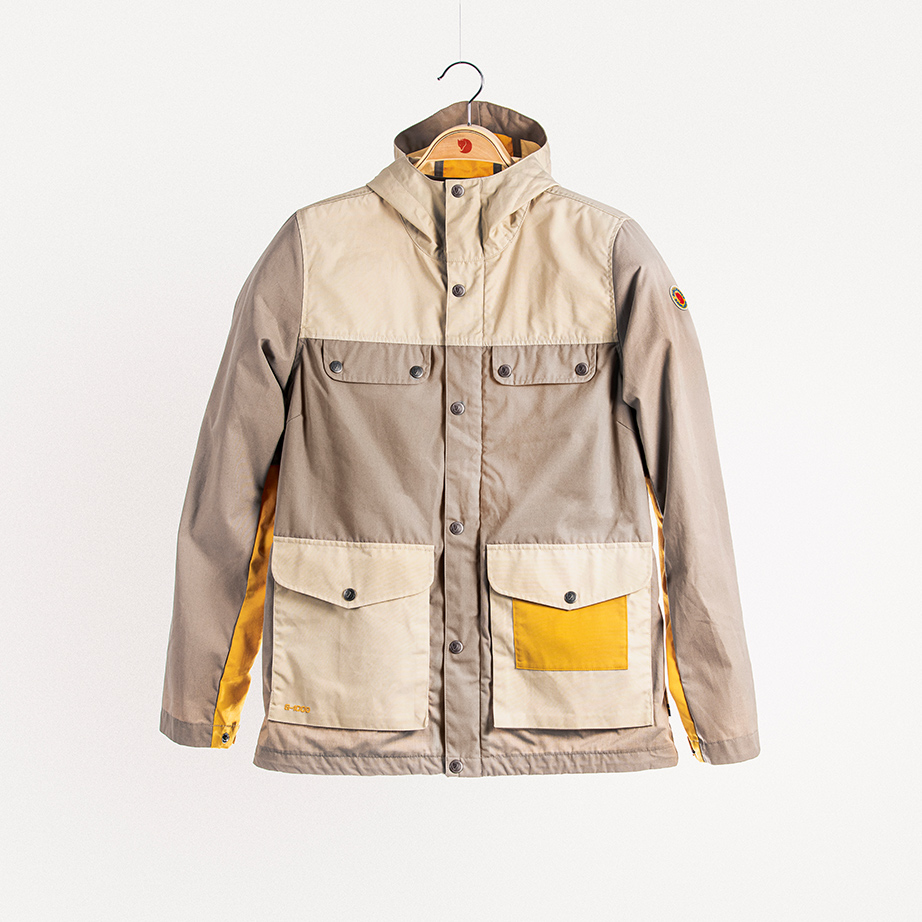
Samlaren Jacket 1b W
One of the more tangible factors is this one: Sometimes, for different reasons, there is fabric that isn’t used. Leftovers that get stored in our warehouses waiting for a use to be found for them. The question is – what can we use them for? “For quite some time now we have been discussing what we should do with the leftover fabric we have. Sometimes we have such large amounts that we thought we should be able to use it in creative ways,” says Sarah Isaksson, designer at Fjällräven and creator of the new collection Samlaren. Although Samlaren is a limited collection and available only at selected stores and online for as long as supplies last, it is a good example of Fjällräven’s thorough approach to sustainability and not letting resources go to waste.
The idea behind Samlaren is simply to use up leftover fabric that can’t be used for its original purpose.
The idea behind Samlaren is simply to use up leftover fabric that can’t be used for its original purpose. There are several reasons why fabric is sometimes left over.
“When we place an order for fabric, there is often a minimum size that the order has to be. So sometimes we have to place an order for more fabric than we need. We might need 200 metres of fabric for a season, for example, but the minimum order is 1000 metres to get it at a good price. We know that we will continue production the following season so this usually works well,” says Sarah and continues: “But sometimes we get large amounts of fabric that isn’t used the following season if a colour doesn’t sell well. Or something happens with the colour so it is a different nuance from the previous year. Small differences aren’t a problem, but when the same product is hanging in a shop with visibly different hues of the same colour, we have a problem.”
Every jacket is unique and its individual description will include how it is put together.
Organic fabrics range in colour
Shifting colour nuances can depend on anything from the pH levels in the water to the air humidity at the time of dyeing, and when recycled materials are involved the original product can also affect the end result. “Today we primarily use recycled polyester, and the colour of the pet bottles we recycle can affect the fabric’s colour. Even changing to organic cotton has affected the colour of the fabric. Organic cotton is not grown in the same way as conventional cotton, and this can lead to the fibre taking the dye in different ways during different dyeing occasions,” says Sarah Isaksson.
Despite there not being anything wrong with the fabric, if the colour isn’t consistent it won’t be accepted,” she explains. “This is often the case if there are different nuances in different parts of the same garment. With the Samlaren collection, however, this has been changed into something positive. Colours can be mixed, and we can use this to give the garments a unique look.”
“It is such fun to work with because it is an unusual challenge. And I love colour! Having access to a whole spectrum of colours and putting different combinations together is a lot of fun.”
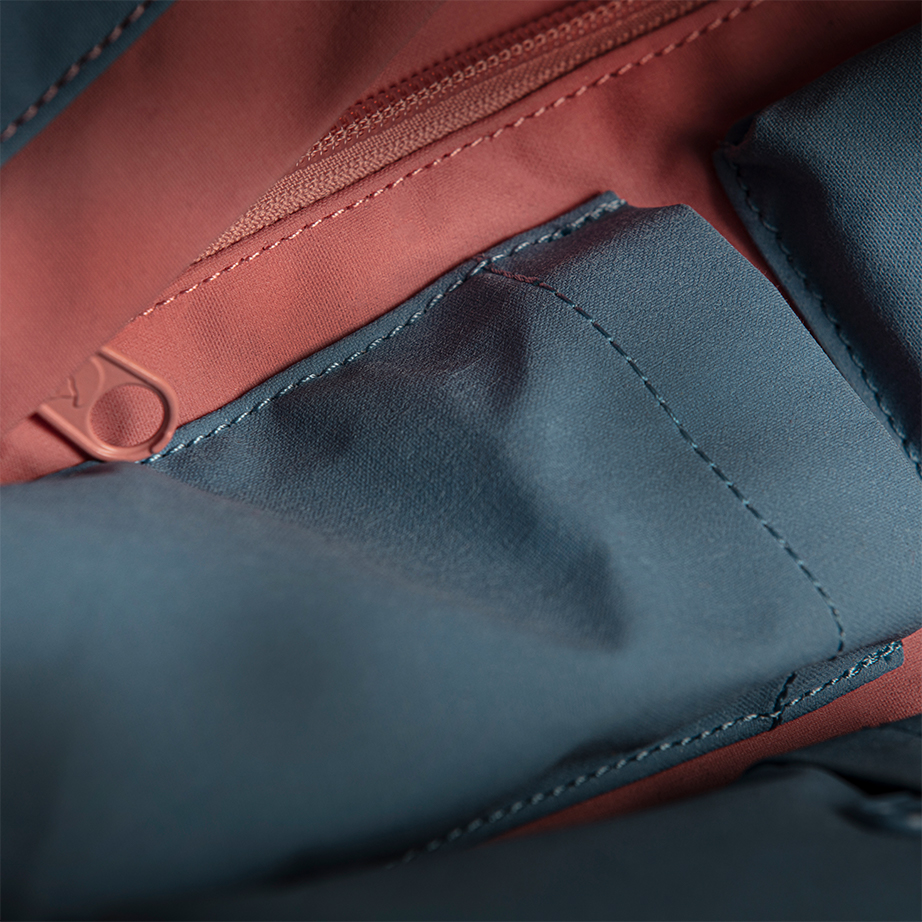
Samlaren Kånken 1d
For the first collection of Samlaren, just a few products have been selected: the classic Greenland Jacket, a cap, a special version of Kånken and a tote bag. All are made from leftover pieces of G-1000 fabric. Kånken, which is usually made from vinylon, doesn’t only have a different fabric structure in the Samlaren version, it also has a new look with new features. It is still based on the traditional design, but it has not just one, but four pockets on the front in different pieces of fabric, so it is easier to keep your gear organised. The Greenland Jacket has been modified as well, primarily with its creative way of combining different colours but it also has a slightly different design for the pockets. In addition to mixing colours, different versions of G-1000 have been used in one and the same garment as well. In one particular jacket, G-1000 Lite can be used for a certain section, while G-1000 HeavyDuty can be used for the same section in another. “This of course gives a little difference in functionality, but we will communicate this to our customers. Every jacket is unique and its individual description will include how it is put together,” says Sarah Isaksson.
G-1000 is the primary fabric
The products in the Samlaren collection are made from Fjällräven’s classic G-1000 fabric, which started off as a repurposed fabric itself. It all began in 1968 when Fjällräven’s founder Åke Nordin wondered what he should do with the fabric he had originally intended to use for tents but that he had rejected for being too heavy. When he discovered that it had all the qualities needed for clothing that required durability, ventilation and water resistance, he lay the foundations for classics such as the Greenland Jacket and the first Fjällräven trousers that would be loved for generations.
However, when Fjällräven started the process of replacing conventional G-1000 to G-1000 Eco, there was a number of bolts of fabric yet unused, and seemingly unusable. Producing clothing in the old fabric at the same time as officially announcing the decision to use only organic fabrics was too complicated from a marketing and sales perspective. “So now we are using the old leftover fabric in the Samlaren products,” says Sarah Isaksson. She goes on to explain how incredibly complex this is from a sustainability viewpoint. The worst that can happen is that the fabric is never used and ends up getting destroyed. This would lead to a large amount of carbon dioxide being released – for something that was never even used. This kind of waste is an issue that needs to come up more when discussing what is, in fact, sustainable. “What we are doing is a drop in the ocean, we are not saving the planet here. But it is a part of the sustainability work we are doing, and together with other companies we can change the direction of the development of this industry,” says Sarah Isaksson. Sarah can’t say when the next Samlaren collection will be released. Maybe in a couple of years. Maybe never. “Hopefully we won’t need to do this again. We are aiming for a perfect balance so that stockpiles of leftover fabric become a thing of the past.”
Samlaren Collection
New adventures for leftover fabrics
NOTE: The limited Samlaren collection is available in selected stores and online for as long as supplies last.
Related Film
Related Articles
Products

